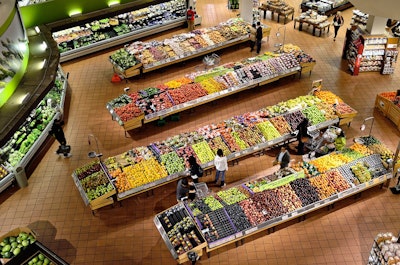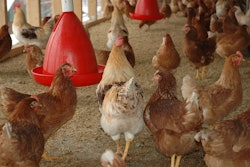
Farmdoc Daily has done a deep dive* into the perceptions U.S. consumers have of the nations food system. In recent years, rising food prices have become a significant concern for US consumers. According to the USDA Economic Research Service, the food Consumer Price Index increased by approximately 25% from 2019 to 2023, largely due to supply chain disruptions. Amidst cooling inflation measures and escalating political campaigns, the spotlight has shifted to the pricing strategies and market dominance of companies.
A recent example of federal action reflecting these concerns is the Federal Trade Commission's lawsuit to prevent the merger of Kroger and Albertsons, a move interpreted differently by the involved parties. Kroger and Albertsons argue that the merger would decrease food prices, while the FTC fears it would lead to price hikes.
To understand public opinion, this article examines findings from the latest Gardner Food and Agricultural Policy Survey, focusing on US consumers' views on the size and pricing strategies of key food system players: farmers, food manufacturers, grocery stores, and restaurants. The survey also explores perceptions of firm size in relation to food quality aspects like safety, taste, and affordability.
The Gardner Food and Agriculture Policy Survey is a quarterly online survey tracking US consumer perceptions on food and agriculture. Each quarter, approximately 1,000 participants, representative of the US population in terms of gender, age, income, and region, are recruited. This article presents findings from the survey's eighth wave, conducted in February 2024.
Firm size perceptions
The survey revealed that 67.8% of consumers consider food manufacturers and 51.6% think grocery stores are excessively large, indicating significant market control. In contrast, only 35.7% and 19.0% of participants viewed restaurants and farms, respectively, as too large. Notably, these concerns about firm size spanned across political affiliations.
Perceptions of overcharging
Over 70% of respondents believe restaurants, grocery stores, and food manufacturers are overcharging them, whereas only 21.9% felt the same about farmers. Again, there was little variation in these perceptions across political parties.
Firm size and quality perceptions
The survey also investigated how consumers relate firm size to quality metrics. Most respondents believe large food companies are more capable of ensuring affordability, while small companies are seen as better at providing sustainable and healthy food options. However, for safety, taste, and accessibility, consumers view firms of all sizes as equivalent.
The survey indicates a widespread perception among consumers that food manufacturers and grocery stores have excessive market power and are engaging in overcharging practices. This sentiment holds true across political parties. Interestingly, while large firms are criticized for their size and pricing strategies, they are also credited for maintaining affordability.
The complexity of consumer perceptions suggests a nuanced public view towards potential policy responses. Recent voting-focused surveys indicate some support for actions such as product size labels and government fines for excessive price increases. These insights are vital for stakeholders in the food chain as they navigate the evolving landscape of consumer expectations and regulatory challenges.
*Kalaitzandonakes, M., J. Coppess and B. Ellison. "Sizing Up the Food System: US Consumers’ Perceptions of Food System Firm Sizes and Pricing." farmdoc daily (14):47, Department of Agricultural and Consumer Economics, University of Illinois at Urbana-Champaign, March 7, 2024.


















